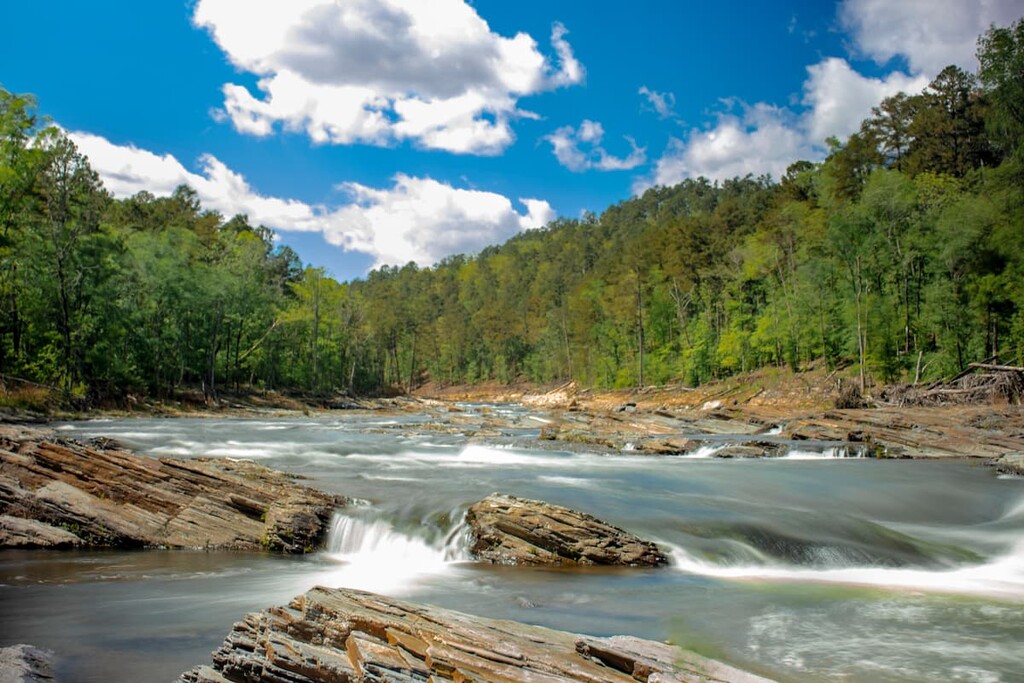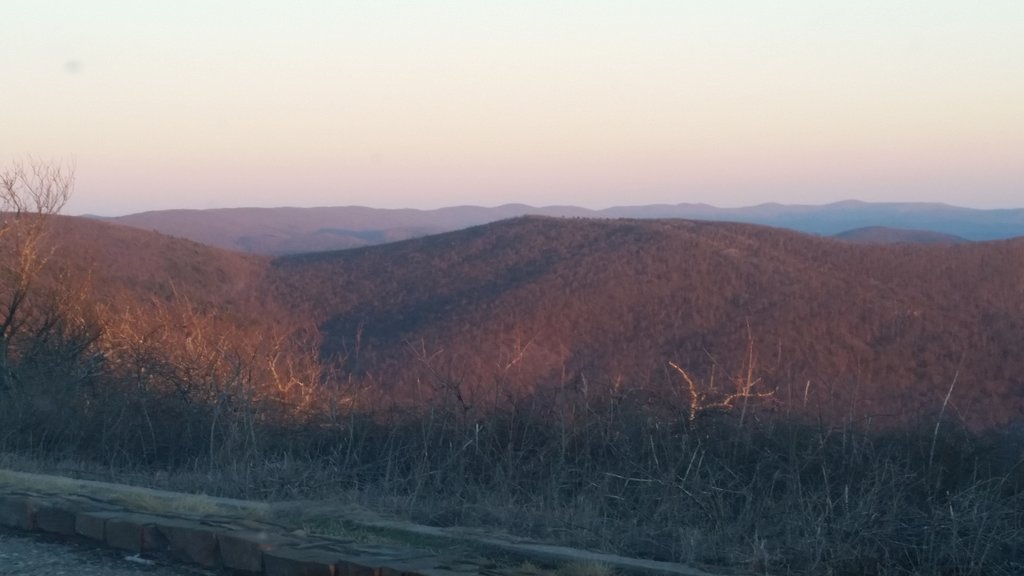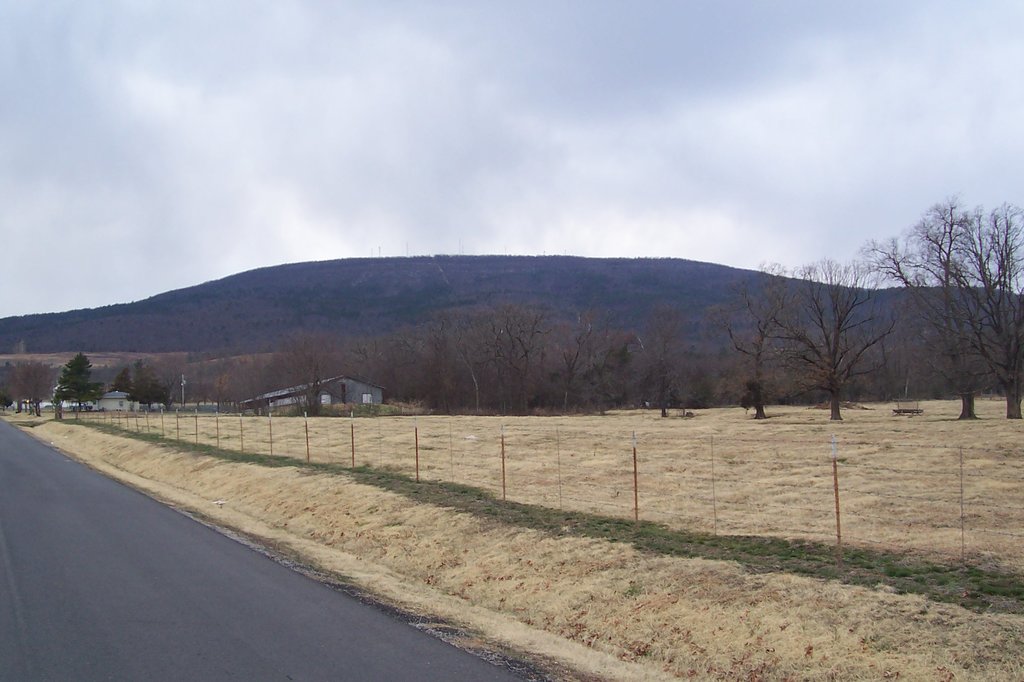Get PeakVisor App
Sign In
Search by GPS coordinates
- Latitude
- ° ' ''
- Longitude
- ° ' ''
- Units of Length

Yes
Cancel
Share ×

Scan the QR code and open PeakVisor on your phone
❤ Wishlist ×
Choose
Delete
The Choctaw Nation is a sovereign tribal nation with a rich and extensive history. The nation has a reservation that's located in the southeastern region of the US state of Oklahoma. Within the reservation, there are 281 named mountains, the tallest and most prominent of which is Sugar Loaf Mountain at 2,566 ft (782 m) in elevation and 1,880 ft (573 m) of prominence.
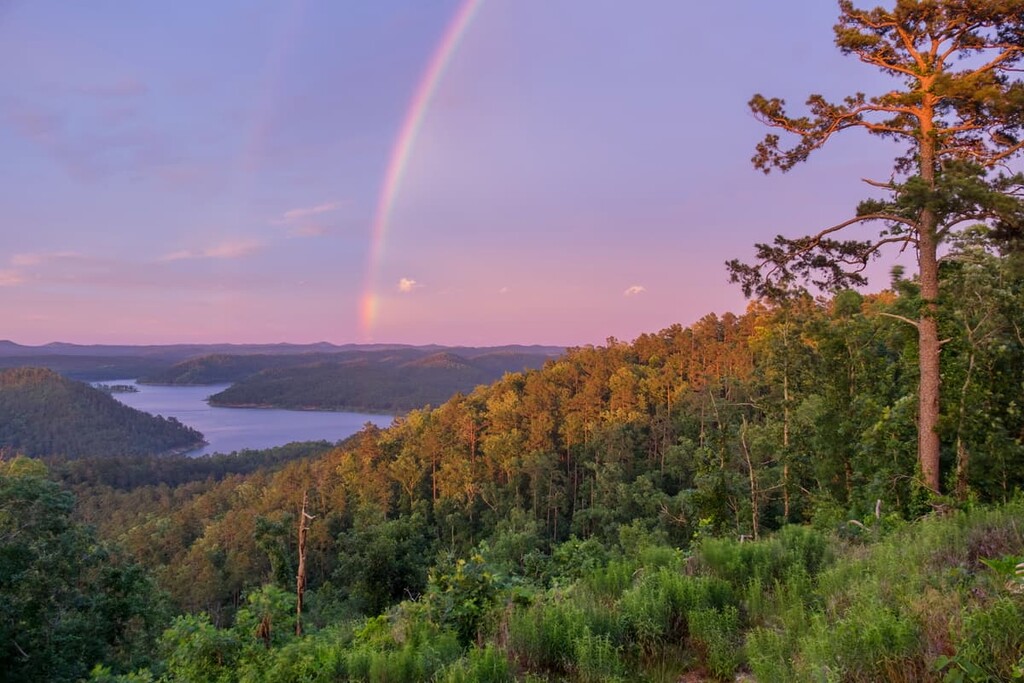
The Choctaw Nation of Oklahoma (Chahta Yakni) is a federally-recognized sovereign tribal nation that’s currently headquartered in the southeastern corner of the US state of Oklahoma.
The nation’s reservation spans 10, 864 sq. miles (28,138 sq. km), which makes it bigger than the states and territories of Puerto Rico, Delaware, New Hampshire, Vermont, Hawai'i, Massachusetts, Connecticut, and Rhode Island.
There are eight counties within the reservation along with portions of five other counties. The nation’s de facto capital is at Durant while its de jure capital is at Tuskahoma. Additionally, the Choctaw Nation’s reservation is divided up into 12 administrative districts.
Much of the reservation consists of low rolling hills. A majority of these hills, especially in the eastern region of the reservation, are heavily forested. Creeks and streams are common throughout the land with many headwaters starting in the Ouachita Mountains.
The Ouachita Mountains are a dominant feature of both eastern Oklahoma and western Arkansas that extends into the Choctaw Nation reservation. The mountains are about 50 to 60 miles (90 to 95 km) long from north to south and they extend 225 miles (360 km) from east to west.
The abundance of rivers and streams throughout the mountains, and the reservation, are known for their pristine qualities. The western foothills of the Ouachita Mountains are home to lush river valleys that lead into gentle rolling fields.
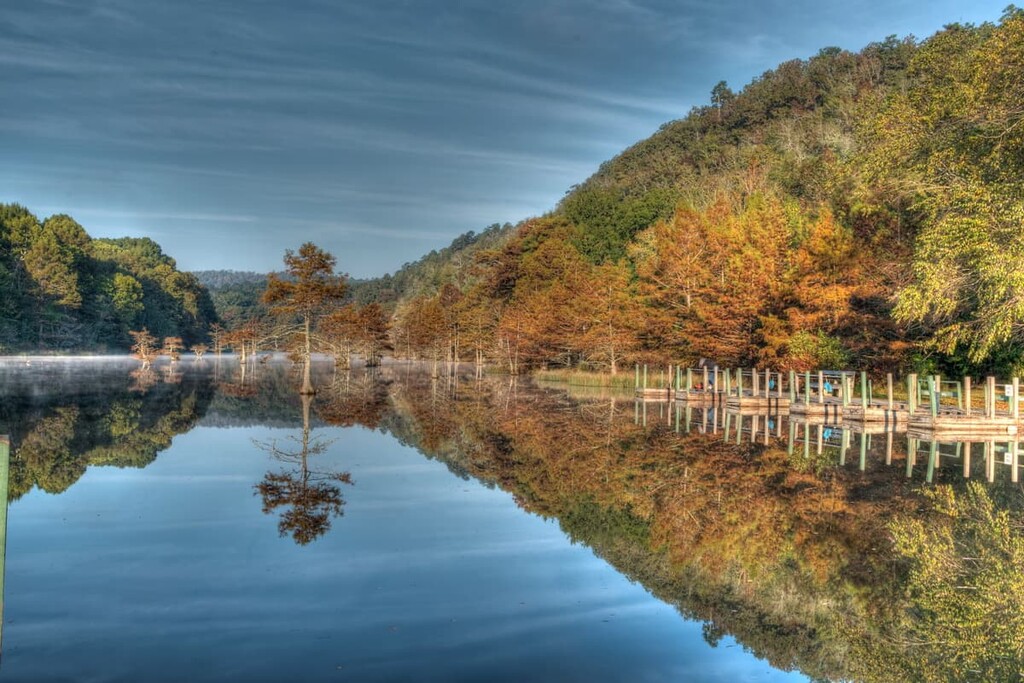
While the reservation itself is under the management of the Choctaw Nation, it is surrounded by popular outdoor recreation areas on US federal- and state-managed land. A majority of Ouachita National Forest lies to the east and Ozarak-St. Francis National Forest is situated to the northeast of the reservation.
Meanwhile, Hochatown State Park, Beavers Bend State Park, Robbers Cave State Park, and McGee Creek State Park are located within the Choctaw Nation reservation.
The geological history of the land that is part of the Choctaw Nation reservation is closely intertwined with that of the Ouachita Mountains. During the Paleozoic era, approximately 300 million years ago, tectonic movement led to the formation of the Ouachita fold and Thrust Belt.
The oldest rocks in the region are located near the center of the range, by the Oklahoma and Arkansas border. The southwestern portion of the range extends into the Marathon area within western Texas.
Due to the region’s unique tectonic situation, the Ouachita Mountains run from east to west, unlike many of the ranges located in North America. Continual folding over the course of millions of years led to the formation of numerous distinct subranges.
Today the region is known for being home to some of the finest quartz in the world. Major peaks within the nation include Sugar Loaf Mountain, Wilton Mountain, Lynn Mountain, Winding Stair Mountain, and Cavanal Hill.
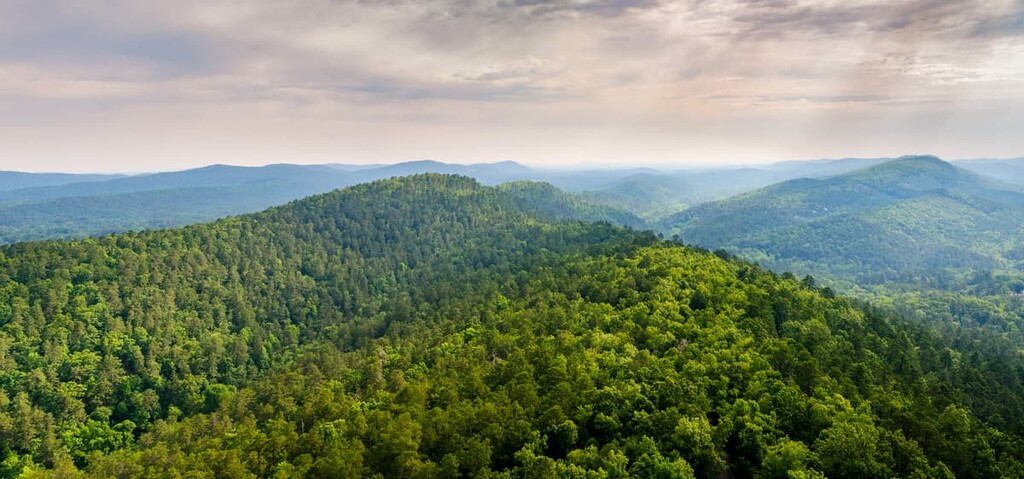
The rolling hills of the Choctaw Nation reservation are dominated by a forest landscape. Pine, oak, and hickory trees encompass the eastern region of the nation. The maple-leaf oak can be found in the foothills of the Ouachita Mountains.
Various grasses are found throughout the landscape. Common species include bluestem, sand lovegrass, buffalo, and grama grasses. Bluestem is one of the most popular species of the region, as it doesn’t grow much in western Oklahoma.
Common animal species found in the Choctaw Nation include white-tailed deer and coyotes. Prior to the arrival of European settlers and colonizers, both bison and elk inhabited the land that is part of the Choctaw Nation reservation, though settler activity led to the extirpation of both species in the region. Bald eagles along with various types of trout are found within the reservation.
Rio Grande wild turkeys are found throughout the region and black bears are occasionally found near the Ouachita Mountains. The wetlands near the numerous creeks provide an ideal habitat for various species of salamanders.

The land that is part of the contemporary Choctaw Nation reservation has been inhabited for thousands of years. Between 4,000 and 8,000 years ago, what is now the southern United States was inhabited by people of the Paleo-Indian (Paleo-American) culture, which refers to the first peoples to arrive in the Americas during the late Pleistocene.
The people of this culture were predominantly hunters and gatherers who relied heavily on hunting. During this time, the land was likely inhabited by species such as bison, mastodons, and even mammoths.
In more recent millennia, a number of other cultures formed in the region. This includes people of the Woodland period, which were responsible for building Nanih Waiya and other mound structures in the area. Also known as the people of the Hopewell tradition, this group of people inhabited the region from around 100 BCE to 500 CE.
However, the contemporary Choctaw Nation does not have its ancestral roots in Oklahoma. Rather, the traditional territory and ancestral homelands of the Choctaw are located further to the south in the area that is now known as Louisiana, Mississippi, Alabama, and Arkansas.
The Choctaw first made contact with peoples of European descent during a number of Spanish expeditions through their territory in the sixteenth century.
During the latter part of the seventeenth century, the Choctaw also made contact with French fur trappers that were traveling throughout their homelands. During the eighteenth century, the Choctaw also traded fairly extensively with both the United Kingdom and France
One of the most significant and disastrous events in recent Choctaw history was the passage of the Indian Removal Act of 1830 under President Andrew Jackson. As a result of this law, the vast majority of tribal nations in the eastern portion of what is now the United States were forcibly removed from their homelands. Many were forced to march to what is now Oklahoma on the Trail of Tears.
That same year, the Choctaw signed the Treaty of Dancing Rabbit Creek. This treaty ceded millions of acres of Choctaw land in what is now Mississippi and Alabama to the United States. In exchange, the Choctaw were given a reservation in what is now Oklahoma.
The small community of Choctaw that were able to remain in Mississippi were given status as US citizens. They eventually organized themselves into the Mississippi Band of Choctaw Indians.
However, those who left were subjected to a brutal forced relocation on the Trail of Tears. As part of the Treaty of Dancing Rabbit Creek, the Choctaw Nation was given autonomy over its lands in what is now Oklahoma. However, an act of 1906 led to further exploitation of the Choctaw people as wealthy white officials in Oklahoma dissolved their government and then reappointed tribal chiefs.
During World War I, members of the Choctaw Nation became some of the world’s first code talkers. The 19 original code talkers, who pioneered the use of Indigenous languages for military code, were born in the Choctaw Nation.
In 1970 President Richard Nixon signed a bill that repealed the Termination Act of 1959, which was originally intended to terminate the US’s recognition of the sovereignty of Indigenous tribal nations. The following year, in 1971, the Choctaw Nation held its first election since 1907.
These days, the Choctaw Nation is a sovereign, self-determining tribal nation with a rich cultural heritage. The tribal nation boasts many successful artists, athletes, leaders, innovators, and business professionals among its membership.
The Choctaw Nation hosts a Heritage Day on the first Monday of every month at the nation’s headquarters for anyone who wants to learn more about the tribe and celebrate its culture. Additionally, the tribal nation is committed to preserving and celebrating its language through language education courses and a strong revitalization effort.
Visitors are welcome on the Choctaw Nation reservation. The nation features a strong tourism industry and it boasts a number of great activities on its reservation, including outdoor recreation opportunities as well as cultural and historical sites.
A great place to start your journey is at the Choctaw Welcome Center. You can also visit ChoctawCountry.com to plan your trip to the reservation.
The Choctaw Nation reservation is home to numerous trails that make for a great adventure. Here are some of the top hiking areas to visit in the reservation:
Located in the southeastern region of the Choctaw Nation reservation lies Beavers Bend State Park. The park spans 1,300 acres (5.3 sq km) and surrounds Broken Bow Lake. Within the park lie 16 miles (25.7 km) of hiking trails.
Other activities in the park include bird watching, fishing, kayaking, and horseback riding. Accessible throughout the year, this remote park helps visitors experience the region’s stunning natural landscape.

Robbers Cave State Park lies just northwest of the central region of the Choctaw Nation. Situated in the San Bois Mountains, the park covers 8,000 acres (3,200 ha) of land.
Besides a plethora of hiking trails, the park also contains three lakes; Lake Wayne Wallace, Coon Creek Lake, and Lake Carlton. The park also has camping facilities, horseback riding trails, and fishing opportunities.
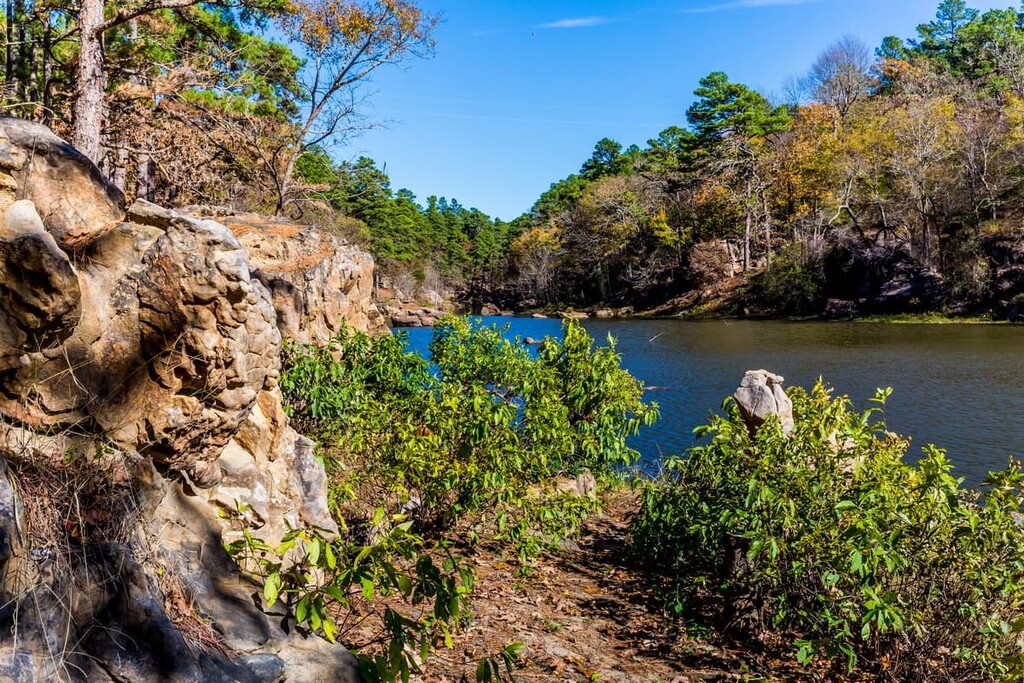
While a vast majority of Ouachita National Forest is located within Arkansas, the western stretches of it are located in eastern Oklahoma on the land of the Choctaw Nation reservation.
The Black Fork Mountain Wilderness and the upper Kiamichi River Wilderness help protect populations of old growth forest and is also home to various hiking trails.
Looking to visit the Choctaw Nation reservation? Here are some of the top towns and cities both within and just outside the reservation to check out:
Durant is the de facto capital city of the Choctaw Nation. The city has a population of around 18,000 and lies in the southern region of the reservation. The Choctaw Nation is the largest employer in the community as the tribe's headquarters and the Choctaw Casino are located within the city limits.
Each year, the city hosts the Magnolia Festival and has been named the Magnolia Capital of the World since 1993. The Three Valley Museum is also located downtown and it is well worth a visit.
Located around an hour and half north of the Choctaw Nation lies the city of Tulsa. With a population of over 400,000 people, Tulsa is the second largest city in the state, after Oklahoma City. Today both aviation and telecommunication are key components of the city’s economy.
The location of the city has enabled its culture to be influenced by the southwest, midwest, and the south. Prominent museums include the Philbrook Museum of Art, Gilcrease Museum, and the Woody Guthrie Center.
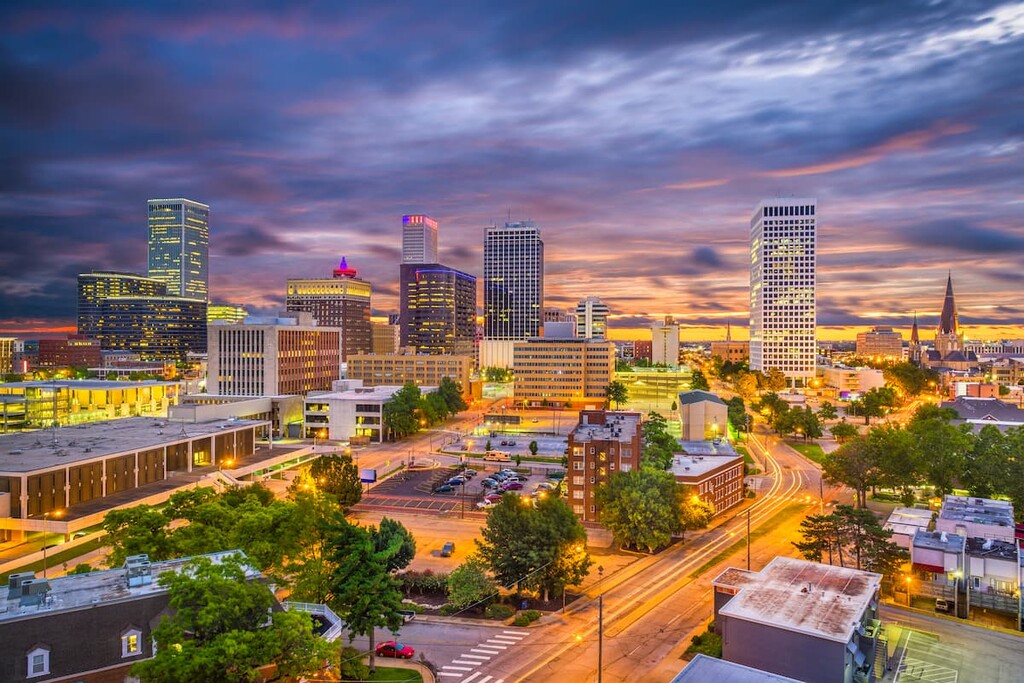
Explore Choctaw Nation with the PeakVisor 3D Map and identify its summits.

